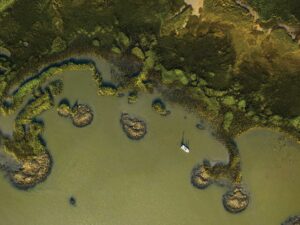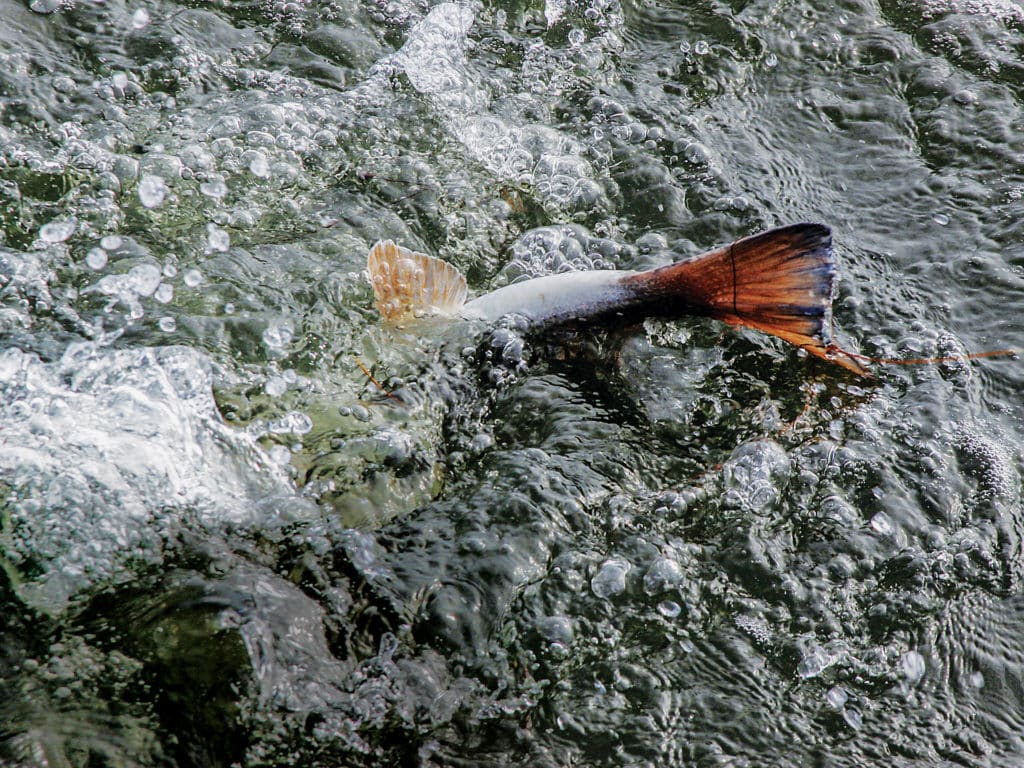
Shortly after setting the anchor, it was all hands on deck to deploy the baits — six in total, two for each man to tend — in hopes of getting the attention of a school of love-struck bull reds. “It won’t be long,” predicted Capt. Don Dingman, keeping an eye on the fish finder. And just as the veteran guide prophesied, not five minutes later, two of the rod tips went down in unison.
The current ripping past our anchored boat added to the pull of the heavy redfish digging for the bottom. But armed with stout jigging gear, the young angler to my right and I moved to opposite corners of the transom and muscled our respective fish, both 20-pounders, to the surface.
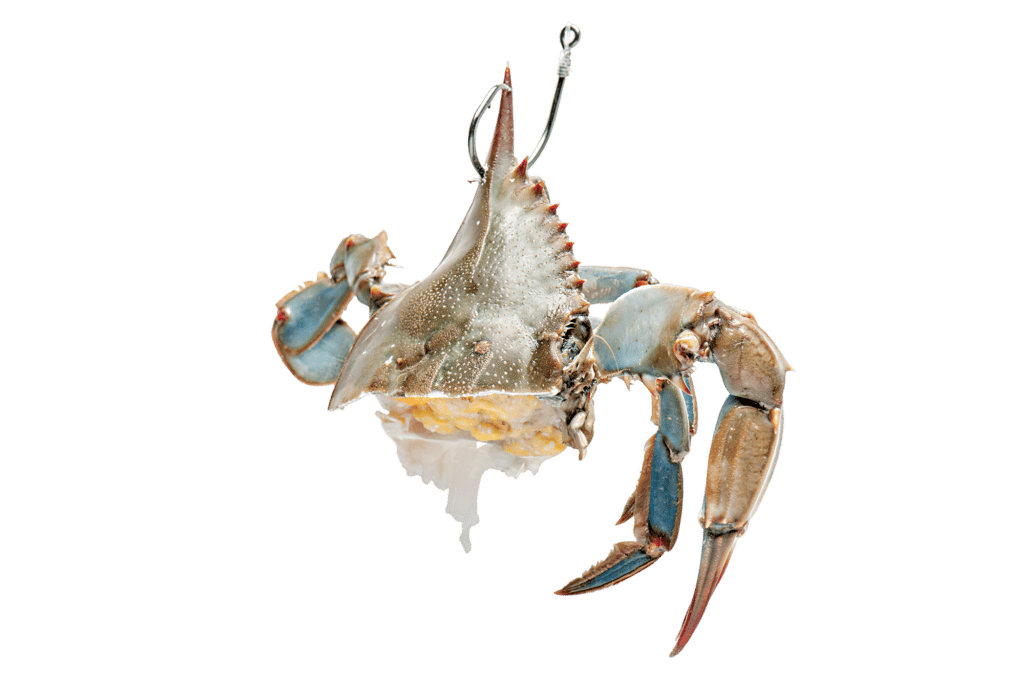
Deep Thoughts
Dingman runs offshore charters off Florida’s northeast coast aboard his 30-foot Scout center console, but in late summer and early fall, he dedicates much of his time to targeting bull redfish inshore. Dingman fishes Mayport Inlet and the Intracoastal Waterway in the lower St. Johns River, almost all the way to downtown Jacksonville. One afternoon in late September, I tagged along as he went looking for schools of bulls along the downslopes on both sides of the 40-foot-deep shipping channel.
Forrest Barrera, a 15-year-old angler with redfish credentials that belie his youthful age, joined us on our afternoon foray on the St. Johns River. Four years in a row, the youngster has been the top Junior in the Full of Bull Tournament, a long-running annual redfish competition in Jacksonville. During our trip, he more than pulled his weight, helping to set the spread, following Dingman’s instructions to the letter, and later showing several trophy reds who was boss.
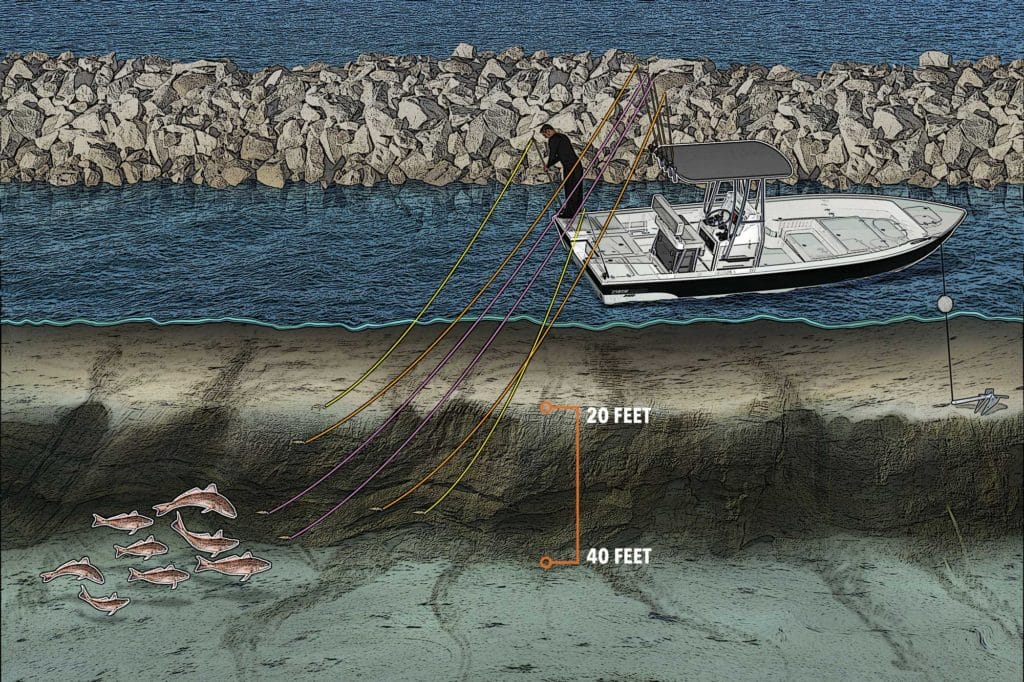
Love Connection
As it happens throughout most of their range, sexually mature redfish — mostly in the 15- to 40-pound class — aggregate in mid-August in preparation for spawning. By September, the vast schools — some have more than 300 members — move to inlets and passes to continue their courtship in deeper water. In northeast Florida, the shipping channel linking the St. Johns River with the Atlantic Ocean offers the depth and strong tidal flow the fish seek, as well as the protected waters that allow anglers in bay boats and skiffs to get in on the action.
Go with the Flow
Typical of most fishing in estuaries, water flow plays a major role when pursuing bull redfish in Mayport Inlet and the lower St. Johns. Here, the tremendous amount of water moving in and out makes bottomfishing quite challenging in all but a few locations. With spring tides often pushing nearly 5 knots, Dingman relies on 10- to 16-ounce sinkers to hold bottom. Many of his favorite spots produce best when the current slows, as the rising tide approaches its peak or the falling tide nears dead low.
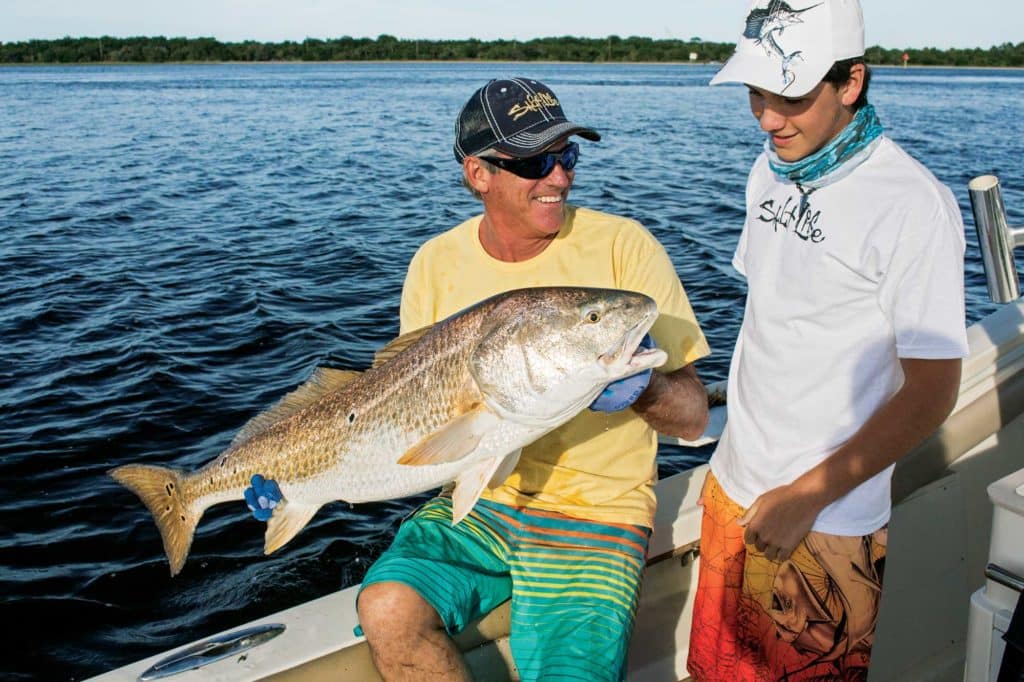
Spread and Scent
Dingman’s go-to rig consists of a couple of feet of 50-pound mono tied to the top eyelet of a three-way swivel, another couple of feet of mono with a 6/0 circle hook on the end tied to the second eyelet, and a shorter 15- to 20-inch length doubled into a loop and tied to the third eyelet, allowing a bank sinker to be easily attached and exchanged for another of a different weight, if necessary.
For bait, Dingman carries crab-scented Fishbites in off-white in addition to live blue crabs. He tears the Fishbites into large hunks, using a couple per hook. He halves the crabs just before baiting each rig, using a half per hook and removing claws and legs to increase scent dispersal and to keep the bait from spinning in the current. To create a wider scent trail, he deploys five to six lines, staggered at different distances from the boat, much like a trolling spread.
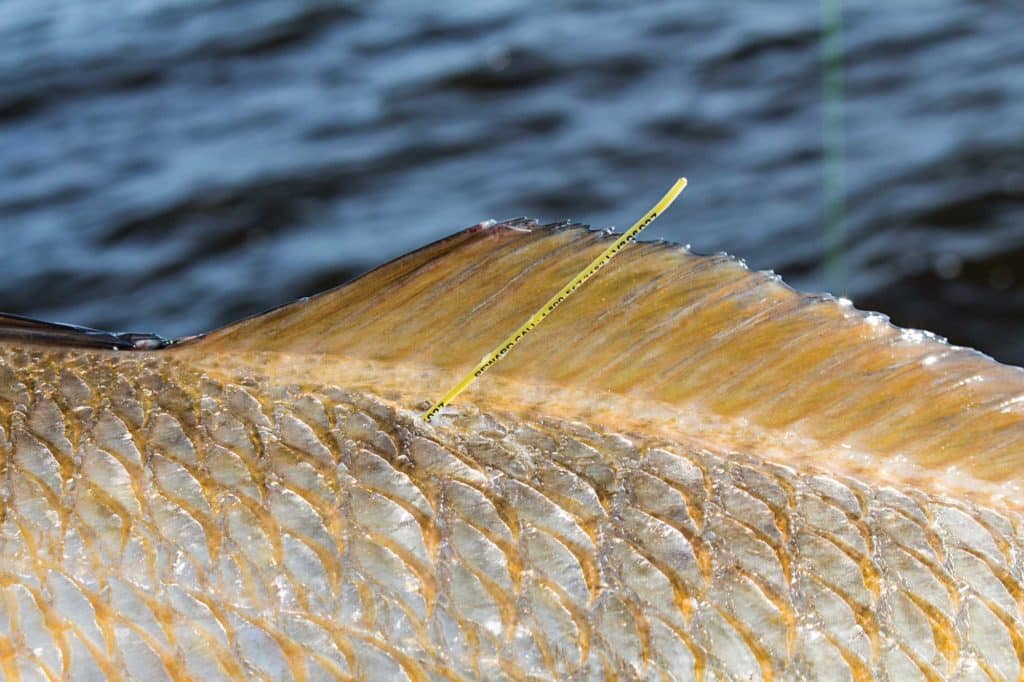
Bull Hangouts
The first three fish came quickly, but the bite soon came to a halt. A glance at the fish-finder screen showed a large school below us, yet the lack of action forced Dingman to pick up anchor and move. We saw no sign of fish at the next two stops, but at the third, we found the mother lode, and everyone joined in the fun. A large cruise ship going by on its way out to sea made for an impressive backdrop as we yanked on big, healthy redfish.
Dingman explains that the schools primarily move along the edges of the ship channel. They tend to hang out in spots where a ledge, rocks or other submerged structure bears the brunt of the stiff current and creates a comfortable eddy. After targeting schooling bulls for three decades, Dingman has pinpointed more than 20 such hangouts, which he returns to easily with the help of a chart plotter. “Some produce during an incoming tide, others during the outgoing,” he says. “The fish are accustomed to boat traffic, so I motor from one spot to the next and let my fish finder tell me if the fish are there.”
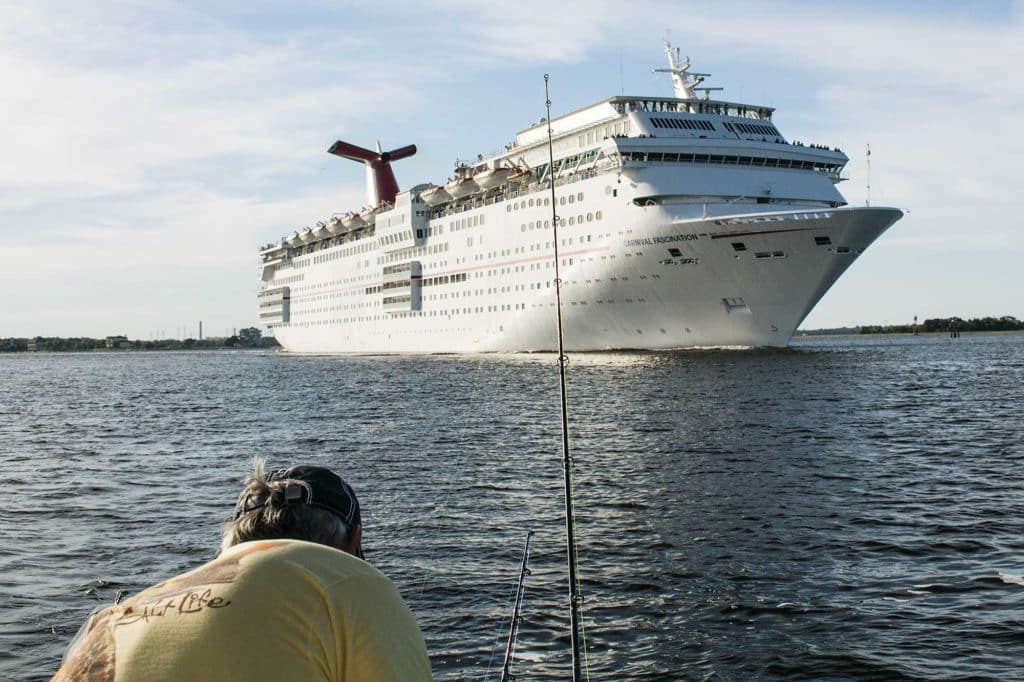
Beat the Clock
Dingman claims his anglers often catch and release 50 or more bull reds in the span of a four-hour charter, with multiple hookups the norm. Rather than pluck all those fish from a single school, he relocates and targets other aggregations to lessen the disruption to their reproduction ritual. And all the reds are oversize spawners, so he opts for circle hooks only and keeps the fights short with heavy tackle. In fact, Dingman commits to catching every fish in a mere eight minutes to ensure their survival. Then the big reds are not totally spent when boated, and returning them to the water quickly and holding each facing into the current for a moment is usually sufficient CPR.
It was 6 p.m. when we called it a day. As we started picking up the baits, one of the longer lines got hit. Forrest jumped to pull the rod out the holder, and he was soon involved in an arduous tug of war. The hooked fish displayed its brute strength, pulling line despite a tight drag. But the teenager kept his cool and methodically pumped to the surface what, a moment later, turned out to be the largest catch of the outing, a deep-bodied bull redfish estimated at about 35 pounds.
Tag and Brag
Tallying hundreds of releases every year affords Dingman the opportunity to assess the region’s adult redfish stocks. So he takes the time to tag every fish and record its length, along with the time and location of the catch. His anglers enjoy the contribution to science and conservation. “We’ve even caught tagged fish several times during charters. When a tagged fish is caught again, the angler who caught it first is notified, and he learns how much the fish has grown and where it ended up.”
SWS Planner
Where: Mayport Inlet and lower St. Johns River, northeast Florida
When: Late summer and early fall
Tackle Box
Rods: 7-foot, 30- to 50-pound conventional
Reels: Matched to rod
Line: 50-pound mono or braid (hi-vis helps prevent tangles), 50-pound monofilament leaders
Rigs: Three-way swivel rigs with 6/0 circle hooks and 10- to 16-ounce bank sinkers
Other: Quick-release anchor setup with a clip and a large buoy on the rode to instantly free the boat to follow hooked fish or avoid close-quarter situations.




